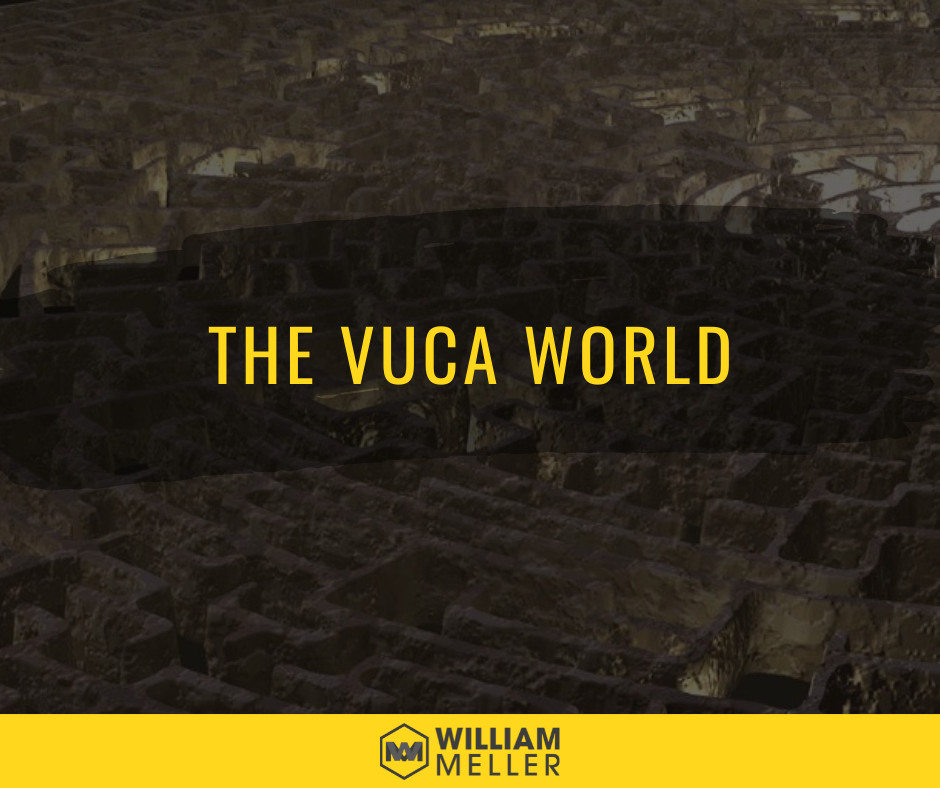
VUCA stands for volatility, uncertainty, complexity, and ambiguity. It describes the situation of constant, unpredictable change in the world.
Data never sleeps! Actually, data shows no signs of slowing down.
In the 9th edition of the Data Never Sleeps infographic, you have a glimpse of how much data is created every digital minute in our increasingly data-driven world.
In just 1 minute…
- Amazon customers spend $283,000
- 12 million people send an iMessage
- 6 million people shop online
- Instacart users spend $67,000
- Slack users send 148,000 messages
- Microsoft Teams connects 100,000 users
- YouTube users stream 694,000 videos
- Facebook Live receives 44 million views
- Instagram users share 65,000 photos
- TikTok users watch 167 million videos
But how this so connected world that changes every single minute affects our way of work, our leadership skills, our companies, our planning, etc.?
Well, it affects everything!
It has become a trendy managerial acronym: VUCA, short word for Volatility, Uncertainty, Complexity, and Ambiguity.
In 1987 the VUCA acronym was used for the first time in the leadership theories of Warren Bennis and Burt Nanus, reflecting general conditions and their volatility, uncertainty, complexity, and ambiguity.
But the term VUCA took place and started to be used in military education, first introduced by the U.S. Army War College to describe the complex world created as a result of the Cold War.
According to the U.S. Army Heritage and Education Center, it was in 1991, during the conference “Developing Strategic Leadership: The U.S. Army War College Experience”, Herbert F. Barber defined strategic leadership within a volatile, uncertain, complex, and ambiguous global environment.
However, it was just an Army War College Study Project published in 1992 that attributes the use of the terminology to General Thurman who characterized the strategic leadership environment in terms of volatility, uncertainty, complexity, and ambiguity.
Scott Berinato at Harvard Business Review, says that executives have taken to using the military acronym VUCA–Volatility, Uncertainty, Complexity, Ambiguity–to describe the world in which they operate and to ask that question: In a VUCA world, what’s the point of strategy?
The acronym first coined in the army is now widely applied to business and society.
V = Volatility: the nature and dynamics of change, and the nature and speed of change forces and change agents.
According to the vuca-world.org:
“… We live in a world that’s constantly changing, becoming more unstable each day, where changes big and small are becoming more unpredictable — and they’re getting more and more dramatic and happening faster and faster. As events unfold in completely unexpected ways, it’s becoming impossible to determine cause and effect…”
U = Uncertainty: the lack of predictability, the expectation for surprise, and the sense of awareness and understanding of issues and events.
According to the vuca-world.org:
“… It’s becoming more difficult to anticipate events or predict how they’ll unfold; historical forecasts and past experiences are losing their relevance and are rarely applicable as a basis for predicting the shape of things to come. It’s becoming nearly impossible to plan for investment, development, and growth as it becomes increasingly uncertain where the route is heading….”
C = Complexity: the multiplex of forces so many sources of issues, no cause-and-effect chain, and confusion that surrounds the organization.
According to the vuca-world.org:
“… Our modern world is more complex than ever. What are the reasons? What are the effects? — Problems and their repercussions are more multi-layered, harder to understand. The different layers intermingle, making it impossible to get an overview of how things are related. Decisions are reduced to a tangled mesh of reaction and counter-reaction — and choosing the single correct path is almost impossible….”
A = Ambiguity: the nebulous around what is reality, the potential for misreads, and the mixed meanings of conditions that bring cause-and-effect confusion.
According to the vuca-world.org:
“… Not everything is black and white — grey is also an option. The demands on modern organisations and management are more contradictory and paradoxical than ever, challenging our personal value systems to the core. In a world where the “what” takes a back seat to the “why?” and the “how?”, making decisions requires courage, awareness, and a willingness to make mistakes….”
The Living Core website made a description with fascinating graphics for each one of the 4 elements of VUCA that I recommend you check out here.
Image: CQ Net (www.ckju.net)
The VUCA world should sound like a code of awareness and readiness, saying that the world we are living in does not require just best practices anymore, but best thinking and adaptability. Our approach to problems in a digital and dynamic world should always consider that even a tweet or a picture published on Instagram could affect our strategy or our plan, and it is no longer a case of finding the one (unique) way of working or the single management tool that could solve all the problems like a silver bullet.
“… The willingness to engage in genuine cooperation and take on clear responsibilities is a basic prerequisite for innovation. This requires freedom, creativity, speed, flexibility and a corporate culture that connects people with the organization. This connection becomes more significant and can be brought into the focus of leadership even more decisively. In a VUCA world, the most important thing is to anticipate the future and to strengthen cooperation in companies with modern solutions. Decisions and connections are success factors for shaping the common cause…” — The Vuca World Org
With too many things to take care of or be concerned about and more coming to our plate every single second, it is easy to feel a bad overload of information and not be able to make smart decisions. This is ironic if you think that in the decade with the biggest amount of data available for humans to make better decisions, we are not being good enough at curating this amount of data and organizing our thoughts.
Information overload is the name for the challenge in understanding things and effectively using them, and it is generally associated with the excessive quantity of daily information. When the situation persists, burnout is a common result.
Organizations, together with all stakeholders within, are best to approach the reality of volatility, uncertainty, complexity, and ambiguity with open thinking and a strategic approach to responding to the constant changes coming.
The VUCA world makes us and our companies concerned about the risk of not being connected and also the risk of being excessively connected and not using the information we gather to make strategic decisions with a wide perspective.
Thank you for reading another article here!
I hope you enjoyed it!
You can support my work in many different ways. You can share it, so it will spread the content to more people. You can also buy me a coffee that will also support my work and maybe give me some extra energy for the next article:
There are even more good things I’ve prepared for you!
